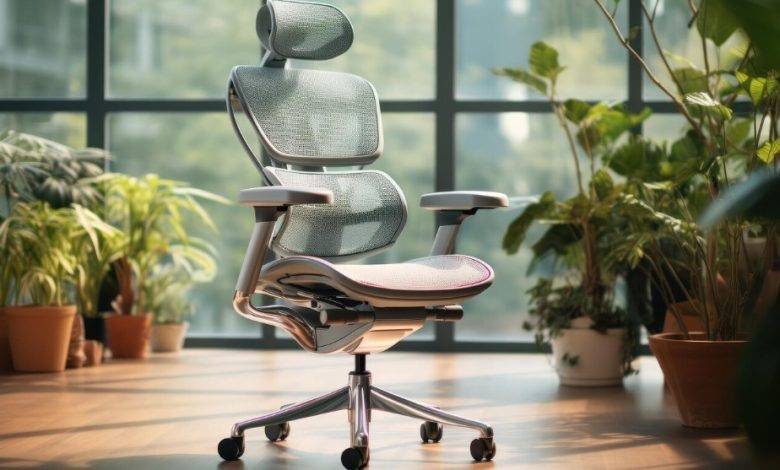
In today’s fast-paced world, where work often extends beyond the traditional 9-to-5 schedule, maintaining productivity and well-being in the office is paramount. Office ergonomics play a significant role in this equation, and one of the key components of a comfortable workspace is the choice of seating. Two popular options are the relaxing chair and the rolling chair, both with their unique advantages. In this 900-word discussion, we will explore the benefits of each to help you make an informed decision on which type of chair is best for your productivity and overall comfort.
**The Relaxing Chair: A Haven of Comfort**
Relaxing chairs, often referred to as ergonomic or executive chairs, are designed with the user’s comfort in mind. These chairs typically feature plush cushioning, high backs, and various adjustable features. Let’s delve into some of the benefits that relaxing chairs offer in terms of productivity.
- **Superior Lumbar Support**: A relaxing chair excels in providing adequate lumbar support, which is crucial for maintaining a healthy posture during long hours of work. These chairs are often designed with adjustable lumbar support, allowing you to customize the chair to your unique needs. Good lumbar support reduces the risk of lower back pain and fatigue, enabling you to focus on your tasks with minimal discomfort.
- **Enhanced Comfort**: The plush cushioning in relaxing chairs provides a cozy and comfortable seating experience. The ample padding and cushioned armrests offer a sense of relaxation that can be particularly beneficial during extended work sessions. Comfortable seating can reduce distractions and enhance your concentration.
- **Adjustability**: Most relaxing chairs come with a wide range of adjustable features, including seat height, recline, and armrest adjustments. This adaptability allows you to fine-tune the chair to fit your body, promoting a more natural and comfortable sitting posture. When you’re comfortable, you’re more likely to maintain focus and productivity.
- **Durability**: High-quality relaxing chairs are built to last. Investing in a durable chair can save you money in the long run as you won’t need to replace it frequently. Knowing that your chair is built to withstand daily use can provide peace of mind, further enhancing your productivity.
- **Reduced Fatigue**: The ergonomic design of relaxing chairs minimizes the physical strain associated with prolonged sitting. These chairs encourage better blood circulation and minimize muscle fatigue. As a result, you’ll feel more energized and alert throughout the day, improving your overall productivity.
- **Aesthetic Appeal**: Many relaxing chairs are designed with a sleek and professional appearance. A well-designed chair can boost your office’s aesthetic, creating a more pleasant and inviting workspace. A visually pleasing environment can have a positive impact on your mood and, consequently, your productivity.
**The Rolling Chair: Mobility and Versatility**
Rolling chair, also known as task chairs, are a popular choice in many office environments. They are characterized by their mobility and versatility. Let’s explore the benefits of rolling chairs and how they contribute to productivity.
- **Mobility**: The primary advantage of rolling chairs is their ability to move freely around your workspace. This mobility is essential in an environment where you need to reach different areas of your desk, access filing cabinets, or collaborate with colleagues at various parts of the office. The ease of movement allows for quick transitions, potentially saving valuable time and improving efficiency.
- **Adaptability**: Rolling chairs often feature a range of adjustment options, including seat height and backrest tilt. These adjustments can help you find the ideal sitting position quickly, reducing the time spent on fidgeting and discomfort. The adaptability of rolling chairs is particularly beneficial if you frequently switch between tasks.
- **Space Efficiency**: Rolling chairs are often more compact than relaxing chairs, making them an ideal choice for smaller workspaces. Their slim design can help you optimize your office layout, ensuring that you have ample room to move and store other essential equipment. This efficient use of space can contribute to a more organized and productive workspace.
- **Collaboration-Friendly**: Rolling chairs are perfect for collaborative work settings. They facilitate easy movement between workstations, enabling seamless communication with colleagues. In an open-office environment, these chairs can enhance teamwork and productivity by eliminating physical barriers to interaction.
- **Cost-Effective**: Rolling chairs are generally more budget-friendly than high-end relaxing chairs. If you’re looking to furnish an office on a budget, rolling chairs can be a practical choice that provides a comfortable and functional seating solution without breaking the bank.
- **Durability**: Quality rolling chairs are built to withstand frequent use and movement. Their sturdy construction ensures that they can withstand the rigors of daily office life, making them a long-lasting investment that contributes to your overall productivity.
**Choosing the Right Chair for Your Needs**
The choice between a relaxing chair and a rolling chair ultimately depends on your specific needs and work environment. Here are some factors to consider when deciding which type of chair is best for your productivity:
- **Nature of Work**: Consider the nature of your job. If you primarily engage in tasks that require extended periods of focused work, a relaxing chair may be the better choice due to its superior comfort and ergonomic features. On the other hand, if your work involves frequent movement and collaboration, a rolling chair’s mobility may be more advantageous.
- **Physical Health**: Evaluate your physical health and any pre-existing conditions. If you have back problems or frequently experience discomfort while sitting, a relaxing chair with superior lumbar support may be the safer option. However, if you’re generally healthy and need a chair that promotes movement, a rolling chair could be a good fit.
- **Office Space**: Take into account the size and layout of your office space. If you have a compact workspace, a rolling chair’s space efficiency may be preferable. Conversely, if you have a larger office and prioritize comfort, a relaxing chair may be the better choice.
- **Budget**: Your budget is a crucial factor. While relaxing chairs often come with a higher price tag, rolling chairs can provide a cost-effective solution that still offers comfort and functionality.
- **Personal Preferences**: Your personal preferences should not be overlooked. Some individuals simply prefer the comfort of a relaxing chair, while others value the mobility of a rolling chair. Your preferences play a significant role in your overall satisfaction and productivity.
In conclusion, both relaxing chairs and rolling chairs have their unique advantages when it comes to office ergonomics and productivity. The key is to carefully assess your specific needs and preferences, as well as the nature of your work, to determine which chair is the best fit for your individual situation. Whether you opt for the plush comfort of a relaxing chair or the versatile mobility of a rolling chair, making the right choice can have a profound impact on your overall well-being and productivity in the office.



